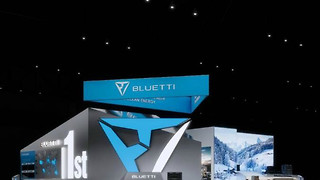Is the library a thing of the past?
Improving our libraries is necessary, admits Fabian Apostoaie, but are we losing something on the way?

Earlier this year, the UL surveyed members’ thoughts on the future of the University Library. If you filled it out, you’ll have noticed the abundance of ‘collaborative’ or adjacent buzzwords (think ‘hub’, ‘social’, ‘hybrid’ descriptors). It’s not just libraries; the SU building is also revising its purpose, with most of the options featuring ’collaborative’ workspaces. New college buildings are also couched in this kind of language. Take any recent college development (such as Clare’s river wing or John’s cafe) and the emphasis, consistently, is on the ‘interaction’ offered by these slightly-social, slightly-studious spaces. It’s cynical to be this way, sure, but nevertheless I remain sceptical. Most of these renovations are genuine improvements and the finished results can be quite beautiful. So what’s the fuss?
“It’s practically an unwritten rule that every new project ought to be split into a variety of different workspaces”
All of this would be fine, were it not for the fact that it seems like this is the only acceptable future for these buildings in the eyes of those in charge. Baked into these visions for the future is an assumption that the libraries and lecture halls of the past are simply old hat. The UL survey stated it wants to introduce ‘a variety of different study spaces’, but in practice, filling out the survey seemed to pigeonhole you into two camps. Either you were a reactionary, whose ideal study environment would have been more suited to the days when students still had to wear gowns after curfew. Or, you were with the party of the future, one of those who recognised this institution as a champion of industry. It’s practically an unwritten rule that every new project ought to be split into a variety of different workspaces, regardless of what actually makes for good scholarship.
If popularity is anything to go off, then clearly most undergraduates at least prefer the more ‘traditional’ study spaces—those that trim the fat and knuckle down on a singular purpose. If you take a look around the Sidgwick site, the most used libraries are the ones that stay open late, have plenty of deskspace, and above all are quiet. Anyone who has tried to get a semblance of their tasks done in these breakout spaces could tell you that they don’t offer much in terms of work or play. My college cafe rapidly fluctuates between a seriously studious environment and basically a regular cafe, there’s not much of an inbetween. One wonders about a world where the architects designed every new workspace in this way, with each being an indistinct cafe-cum-library-cum-botanic garden.
These projects bang on about the need for a variety of approaches. But in practice this involves merely replacing some desks with sofas and beanbags; a couple of bookstacks with computer desks and tables; and sticking a cafe at the front entrance. The recently revealed renovation plans for the Stirling building (home of the Seeley library and crumbling piece of architectural marmite) clearly has this kind of thinking running through its veins. While some much needed structural changes and accessibility fixes will arrive, along with this package there’ll be (surprise surprise) a Cafe, social spaces, and a ‘collaborative’ library. Of course, the building ought not to remain as it is; no one would delight in continuing to use those leaky offices with poor temperature control.
“Most brilliant work is done in small and sentimental spaces”
But in my eyes, it’s not this call for improvement that warrants adding yet another location to get coffee around Sidgwick. These plans seem ignorant to the reality that not every walk of life has to be similar to some silicon valley start-up company, the exact kind of thinking that already dominated most of the West-Cambridge developments. If great work in the humanities was done in these kinds of spaces, then the Judge Business School would have probably produced another poet laureate or Wolfson Prize recipient. But we all know that this is not the case. Most brilliant work is done in a much smaller and sentimental set of spaces than these halls of plastic chairs and light-wood booths could ever muster. Did Wittgenstein remain intellectually inhibited because he didn’t have access to the dynamic social space of the West Hub stairs/chairs? The ridiculousness of such a thought gets at how far we’ve come to accept all of this as normal. It’s not an exaggeration to see yet another encroachment of a ‘business ontology’ mindset out in full force in most of this new architecture. The irony of this being part of the building that houses most social science and political philosophy works should not be lost here.
And that’s really the nub of the issue. I’m sure that the Stirling building revisions (and possible changes to the UL and Student Centre, when they come) will be vast improvements for many; they will probably make for a more enjoyable study experience than most social science students currently have. Yet, there is a sense that we’re seeing something more fundamental to university life disappearing into the mist. Gone are the days of the college don pouring over manuscripts in her early evening. Instead, hail the new age of networking and ‘actioning’ tasks for later (without a ‘mickey mouse’ degree in sight). It’s not reactionary to be sceptical of this. Universities have stood the test of time—the task of simply reading and contemplating even longer. It’s a shame to see even the most fundamental aspects of scholarly life dismissed as antiquated.
 Features / Meet the Cambridge students whose names live up to their degree9 September 2025
Features / Meet the Cambridge students whose names live up to their degree9 September 2025 News / Student group condemns Biomedical Campus for ‘endorsing pseudoscience’10 September 2025
News / Student group condemns Biomedical Campus for ‘endorsing pseudoscience’10 September 2025 News / Tompkins Table 2025: Trinity widens gap on Christ’s19 August 2025
News / Tompkins Table 2025: Trinity widens gap on Christ’s19 August 2025 News / New left-wing student society claims Corbyn support11 September 2025
News / New left-wing student society claims Corbyn support11 September 2025 Science / Who gets to stay cool in Cambridge?7 September 2025
Science / Who gets to stay cool in Cambridge?7 September 2025









